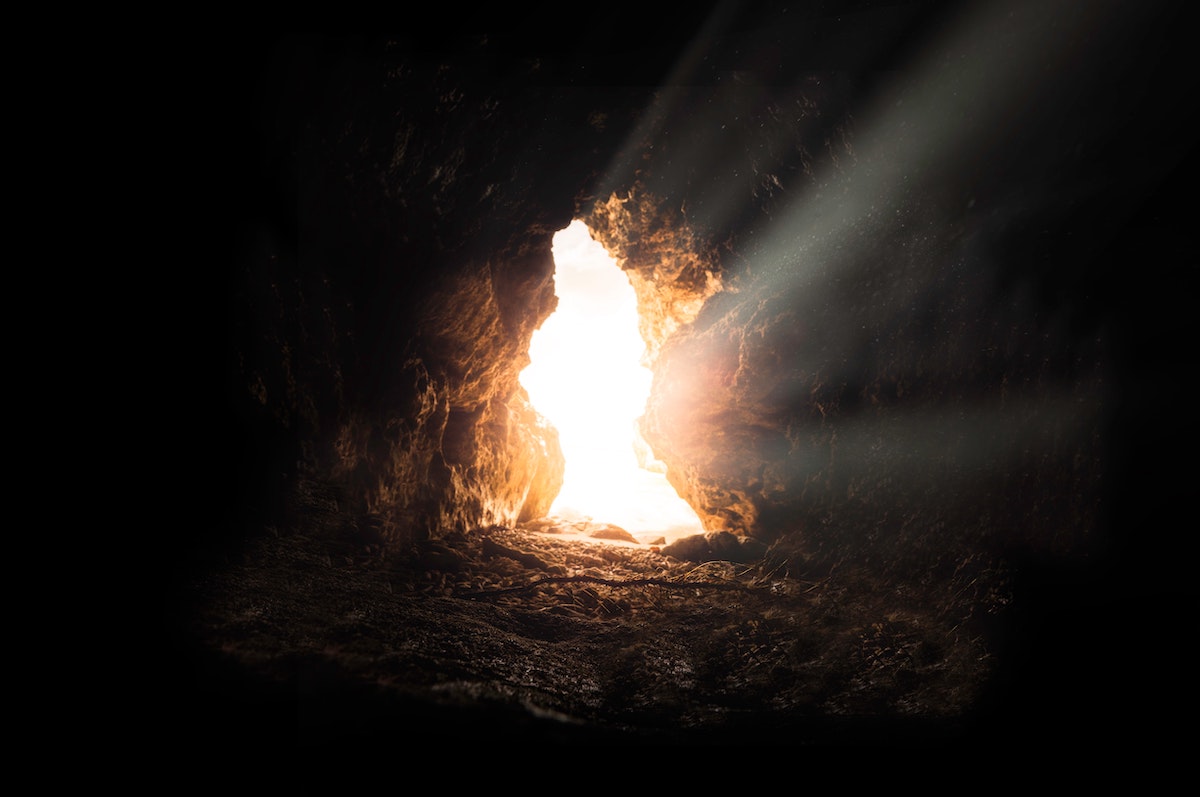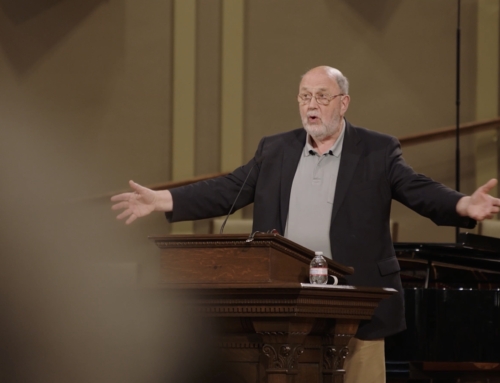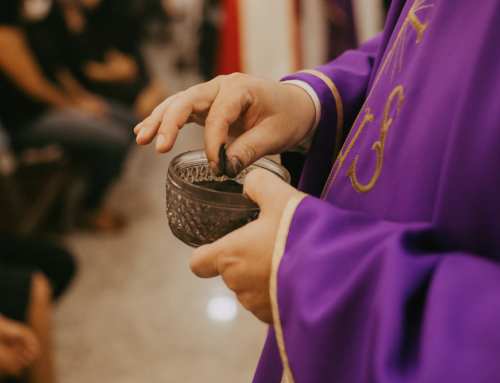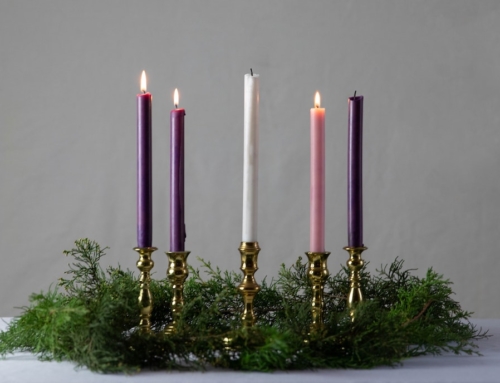On the first day of the week, very early, Mary Magdalene came to the tomb while it was still dark.
She saw that the stone had been rolled away from the tomb. So she ran off, and went to Simon Peter, and to the other disciple, the one Jesus loved.
‘They’ve taken the master out of the tomb!’ she said. ‘We don’t know where they’ve put him!’
So Peter and the other disciple set off and went to the tomb. Both of them ran together. The other disciple ran faster than Peter, and got to the tomb first. He stooped down and saw the linen cloths lying there, but he didn’t go in. Then Simon Peter came up, following him, and went into the tomb. He saw the linen cloths lying there, and the napkin that had been around his head, not lying with the other cloths, but folded up in a place by itself.
Then the other disciple, who had arrived first at the tomb, went into the tomb as well. He saw, and he believed. They did not yet know, you see, that the Bible had said he must rise again from the dead.
On the evening of that day, the first day of the week, the doors were shut where the disciples were, for fear of the Judaeans. Jesus came and stood in the middle of them.
‘Peace be with you,’ he said.
With these words, he showed them his hands and his side. Then the disciples were overjoyed when they saw the master.
‘Peace be with you,’ he said to them again. ‘As the father has sent me, so I’m sending you.’
With that, he breathed on them.
‘Receive the holy spirit,’ he said. ‘If you forgive anyone’s sins, they are forgiven. If you retain anyone’s sins, they are retained.’
John 20:1-9; 19-22 (KNT)
Easter Best
In the middle of this pandemic, most churches were empty, even on Easter. For many, ‘church’ was held virtually, with their computers and televisions bringing the usual visual images and sounds of music and words intending to bring great joy.
For all of my life I have been ‘to church’ on Easter. One thing I remember about all of those Easter mornings: the setting was always brightly lit with colorful flowers all around and with people who wore their ‘Easter best’ outfits.
But the first Easter was shrouded in darkness and mystery, as we read above from the Gospel of John. Mary Magdalene is confused until Jesus reveals himself to her. She thinks he is the gardener. Peter saw linen cloths lying there. A puzzle. John 1:9 states, ‘They did not yet know, you see, that the Bible had said he must rise again from the dead’. How could they not know? Jesus told them what would happen.
The First Day of the Week
In the evening of that ‘first day of the week’, Jesus appears to the disciples who were afraid of being arrested by the Jewish leaders for being part of Jesus’ group of ‘rebels’. Jesus shows him his ‘Easter best outfit’, he showed them his pierced hands and his side.
Signs. John’s Gospel is full of them. It is no accident that Jesus appears to Mary and to the disciples on ‘the first day of the week’. The New Era has dawned, the old ‘week’ is gone and the ‘new week’ has begun. We must be struck by the proclamation that for the author of this great piece of literature, the Gospel of John, Jesus has ushered in a New Creation Era where things are different. When Jesus cried out on the cross, ‘tetelestai’ in Greek, or, translated into English, ‘it is finished’, he declared that the work he came to do in the old era is, indeed, complete.
So the disciples and Mary Magdalene did not realize what was to happen. The events of Jesus’ death and burial made no sense. But when the new era dawns, on the first day of the week, we as readers of our Bibles are transported back to Genesis to the ‘week’ of God’s creation. At the end of that week, after the humans are created, God rests.
Now, at the beginning of the new era, Jesus brings the disciples a call to a new beginning of action by the empowering of the Holy Spirit. They are sent out after the charge given by Jesus:
‘As the father has sent me, so I’m sending you.’
With that, he breathed on them.‘Receive the holy spirit,’ he said.
Jesus brings us to another place where we are forced to recall Genesis 1 & 2. God, in the form of Jesus, gives them his ‘breath’. When God breathes on his people, they are infused with the life-giving spirit which enables them to about the work of being stewards of creation. In the case of Jesus’ disciples, it is into the New Creation world that Jesus sends his disciples. What was lost in Genesis 3, where the humans cede their authority as stewards of creation to the serpent is now regained through the suffering, death, burial, and resurrection of Jesus.
New Creation and the Pandemic
While most of us are sequestered in the midst of a pandemic, the message of Jesus rings the bell again to remind us that we are in a new era, that of New Creation.
While most of us are sequestered in the midst of a pandemic, the message of Jesus rings the bell again to remind us that we are in a new era, that of New Creation. Click To TweetA friend of mine called me on the Monday after Easter, having pondered the texts in the Gospel of John and after he re-read Prof. Wright’s book, Surprised by Hope. He described the experience of now ‘seeing New Creation’ language throughout the New Testament. Yes, of course it is there. But our eyes must be open to interpret the language that was understandable to the disciples after Easter, when Jesus explained what happened and why Jesus had to walk the path of pain and suffering in order to obtain the ‘glory’ of resurrection.
We, too, can walk in this mysterious place of having ‘New Creation’ authority to be stewards of creation with the breath of God’s spirit guiding us. The authority is ‘Jesus-shaped’ authority: full of humility, gentleness, patience, grace, self-sacrifice. This is not ‘this world authority’, but New Creation authority. May we understand and walk carefully having seen what era we now live in. We are ‘First Day of the Week’ people.
David P. Seemuth, PhD
Latest posts by David P. Seemuth, PhD (see all)
- Advent Reflections from the N.T. Wright Online Team - December 5, 2022
- YouTube as Public Reading of Scripture - August 29, 2022
- What I Learned From A Week With Professor Wright - June 16, 2022







